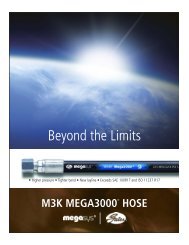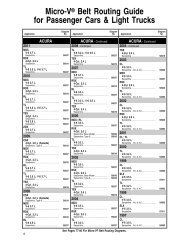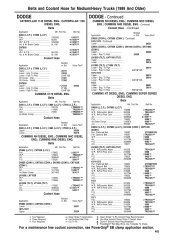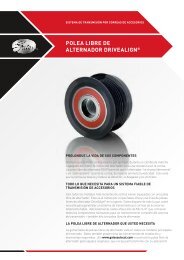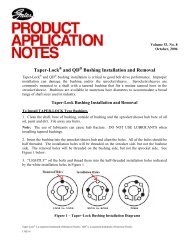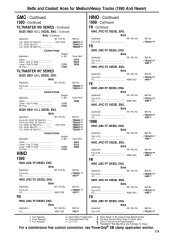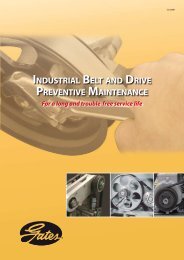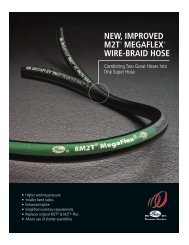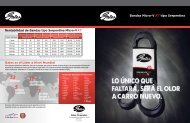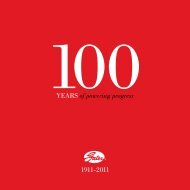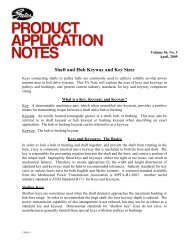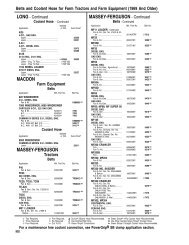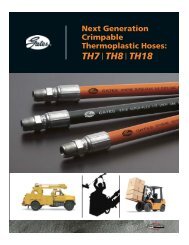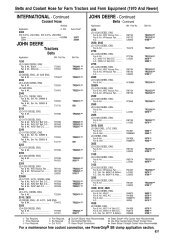PowerGrip® GT® Belt Drives
PowerGrip® GT® Belt Drives
PowerGrip® GT® Belt Drives
You also want an ePaper? Increase the reach of your titles
YUMPU automatically turns print PDFs into web optimized ePapers that Google loves.
Polyflex ® JB ® <strong>Belt</strong> <strong>Drives</strong><br />
Benefits of 60° Design Angle<br />
Fig. 14 shows the 60° angle sheave groove<br />
provides more support to the tensile cord than the<br />
36° angle sheave groove. This additional undercord<br />
support reduces differential tensile cord tension<br />
caused when the center tensile cords relax due to<br />
the belt collapsing under heavy loading. Differential<br />
tensile cord tension means that the cords located at<br />
the belt edge have a higher tension than the cords<br />
in the belt center, as illustrated in Fig. 15. Tension<br />
variation reduces belt performance and horsepower<br />
capacity, since all the tensile cords do not share the<br />
applied load equally. Therefore, the 60° Polyflex JB<br />
system permits overall higher horsepower load<br />
carrying capability.<br />
Sheave support<br />
area under cordline<br />
36 angle system<br />
°<br />
60°<br />
Angle<br />
36°<br />
Angle<br />
Sheave support area<br />
under cordline with<br />
Polyflex JB<br />
Figure 14 – Increase in cordline support in<br />
60° sheave<br />
Figure 15 – Differential tensile cored<br />
tension<br />
The reduced cross-sectional area and lighter<br />
polyurethane material combine together to help<br />
reduce both bending and centrifugal tension.<br />
Bending and centrifugal tension decrease the<br />
allowable working tension. Since bending and<br />
centrifugal tension are lower for Polyflex JB belts,<br />
more effective tension is available for useful work,<br />
resulting in higher horsepower ratings.<br />
Initial reduction of operating tension in a V-belt is<br />
the result of the belt seating in the sheave groove<br />
while operating under a load. The belt effectively<br />
runs on a smaller diameter because of seating in<br />
and results in a tension loss that requires belt<br />
takeup or retensioning. With the 60° Polyflex JB<br />
system, longer running time is possible before<br />
takeup is required.<br />
The amount a V-belt can seat in the sheave and lose<br />
operating tension depends on these factors:<br />
(1) Abrasion resistance of the belt.<br />
(2) Abrasive effect of dust or dirt on the sheave<br />
groove sidewall.<br />
(3) Compression modulus (permanent<br />
compression set, a stress/time<br />
phenomenon, causes tension decay).<br />
Items (1) and (3) above were discussed in the first<br />
part of this section under the Polyurethane heading.<br />
To briefly review, a high abrasion-resistant material<br />
in the belt and a high compression modulus mean<br />
less belt tension deterioration.<br />
However, if some belt and sheave wear does occur,<br />
the effect on seating in the groove is less for the<br />
60°angle compared to the 36° angle. Any seating<br />
due to wear is only 2/3 as great in the Polyflex JB<br />
60° angle as the same wear in a conventional 36°<br />
sheave angle. This is illustrated in Fig. 16.<br />
Figure 16 – Seating in 60° and 36°<br />
Sheave Grooves<br />
In summary, three characteristics of the Polyflex JB<br />
belt in the 60° angle sheave – abrasion resistance,<br />
high compression modulus and less movement in<br />
the sheave groove (if wear does occur) – all mean<br />
less tension decay. For a Polyflex JB drive, the<br />
result is a reduced frequency of retensioning.<br />
The World’s Most Trusted Name in <strong>Belt</strong>s, Hose & Hydraulics.<br />
67



